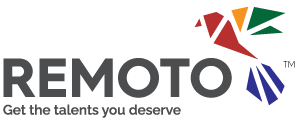Gone are the days of the traditional office grind. There’s been a significant shift in how people work these days. Remote work, which used to be a special perk, is now a normal part of the job for many.
This transformation unlocks a treasure trove of possibilities, from enhanced flexibility to seamless global collaboration. However, with this exciting evolution comes a critical challenge: fostering diversity and inclusion within the digital landscape.
As companies navigate this uncharted territory, fostering a culture that celebrates diverse perspectives and embraces inclusion has become a game-changer, impacting employee morale and organizational performance.
While remote work shatters geographical boundaries, bringing together a tapestry of backgrounds and viewpoints, it can inadvertently breed isolation and exclusion if not managed strategically.
Let’s look at practical strategies that empower you to cultivate a thriving, diverse, and inclusive environment in your remote team. We’ll explore how to ensure every team member has a voice, feels valued, and contributes to their unique talents.
Additionally, we’ll unveil the hidden power of diversity and inclusion by addressing how these principles can propel your business to new heights of innovation, employee engagement, and the ultimate success of remote work.
The Challenges of Diversity and Inclusion in Remote Settings
While remote work offers many benefits, fostering a diverse and inclusive environment presents unique challenges.
One significant hurdle is the need for face-to-face interaction. Water cooler conversations, casual check-ins, and team lunches naturally occurring in a physical office can nurture cultural understanding and foster a sense of belonging. In a remote setting, these valuable interactions require intentional effort to replicate.
Another obstacle is the digital divide. Unequal access to technology and reliable internet across different demographics can create unintentional barriers to participation and engagement. This situation can affect team members from lower socio-economic backgrounds or those in geographically isolated areas.
Finally, unconscious bias, the subtle and often unintentional prejudices we all hold, can be just as prevalent in remote work settings. These biases can manifest in areas like evaluation, communication, and promotion opportunities without the ability to pick up on social cues or body language.
The Power of Diversity and Inclusion in Remote Work
Building a diverse and inclusive remote team is a smart business move. Here’s why.
Diversity of thought and experience fuels innovation. When team members bring a variety of backgrounds, perspectives, and approaches to the table, it sparks creativity and leads to more comprehensive solutions. Imagine a team tackling a complex problem; a diverse group is more likely to identify blind spots and develop groundbreaking ideas.
In today’s interconnected world, understanding markets is crucial. Diverse teams with firsthand knowledge of different cultures and customer needs are better positioned to navigate global businesses. They can tailor strategies to resonate with specific audiences and drive success across borders.
Inclusion can also foster a sense of belonging and psychological safety. Engagement and satisfaction soar when team members feel valued, heard, and empowered to contribute their unique talents. This translates to a more motivated and productive workforce, with lower turnover rates and a positive company culture.
Do you want to deepen your understanding of inclusion and diversity? Watch this TED talk!
Strategies for Fostering Diversity and Inclusion Remotely
Remote work has significantly altered our perception of the modern workplace. The implementation of diversity and inclusion has further reinforced this effect. Below are some strategies for implementing development plans for diversity and inclusion in your company.
Recruitment and Hiring Practices
Equitable recruitment and hiring practices are the foundation of diverse remote teams. Blind recruitment processes, where personally identifiable information is removed, help minimize bias by focusing on skills and qualifications.
Expanding the recruitment horizon through diverse job boards and channels ensures a wider pool of talent, bringing varied perspectives into the team. Moreover, equipping hiring managers with training on diversity and inclusion principles is essential to cultivating an environment where diversity is valued right from the initial stages of recruitment.
Creating an Inclusive Culture Remotely
Cultivating an inclusive culture in a remote setting requires deliberate effort and commitment. Clear values and expectations around diversity and inclusion should be established and communicated across the company.
This includes regular training and workshops for all employees, enhancing their cultural competency and awareness of unconscious bias.
A crucial aspect of fostering an inclusive culture is encouraging open communication and creating safe spaces for team members to share their experiences and perspectives. This openness not only enriches the work environment but also ensures that everyone feels seen and heard, regardless of their background.
Leveraging Technology to Promote Inclusion
Technology plays a key role in facilitating an inclusive remote work environment. Collaboration tools that are accessible and user-friendly across different demographics can significantly reduce barriers to participation.
Platforms for anonymous feedback offer a safe space for voicing concerns and suggestions related to inclusivity, ensuring that issues can be addressed proactively.
Additionally, organizing virtual social events and team-building activities that celebrate diversity helps in building connections and understanding among team members, fostering a sense of belonging and community.
Takeaway
The remote work revolution has opened doors to a global talent pool and a world of possibilities. But with this exciting shift comes the responsibility to cultivate diverse and inclusive teams. By embracing these core principles, you unlock many benefits, including:
- Enhanced innovation
- Employee engagement
- Improve problem-solving skills
- The success of your remote workforce
Here, we have equipped you with practical strategies to tackle the unique challenges presented by remote settings. From implementing inclusive recruitment practices to leveraging technology that empowers everyone, you now have the roadmap to build a thriving remote team where every perspective is valued.














